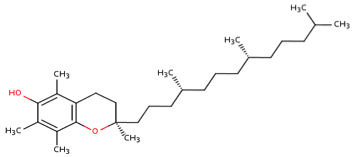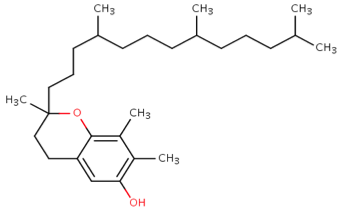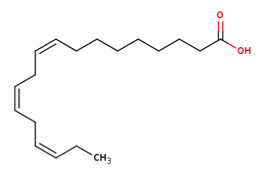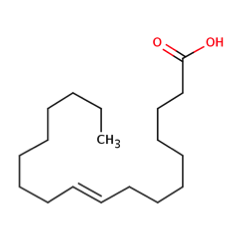Showing report for canola
Captivating Canola Oil
 |
Canola oil is a Canadian invention: grown, developed, trademarked, and distributed all in Canada, it's an amazing source of healthy fats (ALA and oleic acid), phenolic acids, and vitamins (E and K). And compared to most other foods, canola oil is still a baby! Though we're not sure exactly how the name came about, most say that the word canola comes from Canadian oil, low acid. Until the 1970's, there was technically no such thing as canola oil: it was developed by Manitoba scientists through intense genetic modification. Originally called rapeseed oil, because it was pressed from the seeds of the rape plant (Brassica napus), canola oil was developed to have lower levels of unhealthy compounds like eruic acid, saponic acid, and glucosinolates [Bell]. This meant that instead of just being used for oil lamps and machinery fuel, this amazing oil could be used to fuel humans! Because it costs less than other oils to produce, canola oil has become extremely popular worldwide. It is good for you, great for frying and cooking, and comes loaded with healthy nutrients!
Vitamins
 |
| Figure 2. Structural diagram of alpha-tocopherol |
 |
| Figure 3. Structural diagram of gamma-tocopherol |
It might be surprising to hear that canola oil is a good source for vitamins, specifically vitamin E and vitamin K. In fact, oils are one of the best sources for fat-soluble vitamin E [USDA]. The two most common types of vitamin E in canola oil are alpha-tocopherol and gamma-tocopherol. These essential nutrients regulate cell signaling pathways in muscle cells through protein C kinase activity, modulate gene expression in liver cells (hepatic alpha-tocopherol transfer protein and liver collagen alpha l gene), and play a role in neurological function (a deficiency causes neurological disorders) [Muller/Rimbach/Schneider]. Furthermore, there is a a tocopherol-associated protein (TAP), that requires vitamin E for its role as a transcription factor [Rimbach]. Regardless of its many functions, the necessity and physiological role of vitamin E is not entirely understood [Brigelius-Flohé-2009/Brigelius-Flohé-1999]. Besides vitamin E, canola oil is a good source of vitamin K, specifically vitamin K1 (phylloquinone) [USDA]. Without vitamin K, blood wouldn't clot (think hemophilia) and bones wouldn't exist [National Research Council]! Vitamin K plays an important role in the development of several clotting proteins (coagulation factors II, VII, IX and X) and there are vitamin k-dependant proteins used in bone metabolism (osteocalcin and matrix Gla protein) [National Research Council/Price].
Bottom Line: These essential nutrients in canola oil are essentially awesome for your health!
Phytosterols
 |
| Figure 4. Structural diagram of a) beta-sitosterol, b) campesterol, and c) brassicasterol |
According to many producers, one health benefit of canola oil is that it has absolutely no cholesterol! Instead, canola oil contains phytosterols - plant sterols that are very similar to cholesterol in form and function [Vlahakis, Katan]. In canola oil, the most prominent phytosterols are brassicasterol, campesterol, and beta-sitosterol [Przybylski]. Phytosterols are important in plant membrane function and structure, as well as in cell development [Piironen]. The health benefits of these sterols are numerous, but their main strengths are that they're great cholesterol impersonators, cancer fighters, and immune strengtheners!
Phytosterols are able to decrease total cholesterol and LDL cholesterol (the "bad" cholesterol), while not having an effect on HDL cholesterol (the "good" cholesterol) and triacylglycerol levels [Rudikowska, Abumweis, Ras]. How is this done? Well, the phytosterols, instead of being absorbed into intestinal cells, are able to compete with cholesterol for a spot in the micelle structures within the intestine. Micelles with phytosterols integrate into intestinal cells, fooling the scavenger receptor B1's (SR-B1) who facilitate cholesterol movement, therefore decreasing cholesterol absorption and increasing phytosterol absorption [Piironen, Vanstone]. And as many of us know, reduced cholesterol can lead to a reduced risk of cardiovascular disease. In fact, regular consumption of plant sterols in the diet was found to reduce heart disease risk by 25% after two years [Law]! An overall consensus in the literature shows that a dose of plant sterols (between 1.5 and 3 g per day) reduces LDL cholesterol by 8-15% [Quilez].
But wait, there's more! Phytosterols also have amazing anti-cancer properties, and have been shown to be effective in combating some of the most common cancers: breast, prostate, and colon cancer [Awad 2007, Bradford]. Studies attempting to treat cancer through phytosterol dosage were successful in inhibiting cancer cells, both by slowing down the proliferation of the cells, and causing apoptosis (programmed cell death) [Awad 1997, von Holtz, Obeid, Grattan, Bradford]. There are many mechanisms and pathways by phytosterols accomplish this, three of which are:
- activating the sphingomyelin cell signalling pathway, by either tumor necrosis factor alpha (TNF-alpha) or stress activated protein kinase (SAPK), where the lipid molecule ceramide is synthesized, acting as a second messenger [Ballou, Obeid, Ohanian, Verheij]. This is implicated in cancer because ceramide, and another metabolite called sphingosine act as cell growth suppressors, initiators, and differentiators [Hertevig]. For example, colon cancer cell HT-29 and prostate cancer cell LNCaP were inhibited when the phytosterol beta-sitosterol activated and regulated the sphingomyelin cycle, in both cases increasing the amount of ceramide (a known apoptosis inducer) [Awad 1997, von Holtz, Obeid].
- activating Fas receptors, which are also known as apoptosis antigen 1's, are responsible for programmed death [Nagata]! This has been implicated in breast cancer [Awad 2007]. When the Fas receptor pathway is activated by phytosterols, it starts up an apoptotic response, killing cancer cells [Grattan]. The Fas receptor activates some proteins responsible for apoptosis, such as FADD (Fas Associated Death Domain) and TRADD (TNF receptor associated death domain) [Daniel]. Because the receptor for these proteins, the proteins themselves, and the phytosterols responsible for the activation are all located within cell membranes, activating the response is easy!
- stopping cell cycles, which reduces cancer cell proliferation, metastasis, and development [Bradford]. This was found in the case of breast cancer cell line MDA-MB-231 where phytosterols interfered right before mitosis, in the G2/M phase [Awad 2001]. This is interesting because phytosterols have taken over the role of cholesterol and are using this role to stop cancer! You see, cholesterol is essential in the G2/M phase because it activates the kinases necessary for mitosis by activating phosphorylations needed for cell division[Ma]. Other types of cancer cells that have had metastasis stopped by phytosterols in a similar way include prostate cancer cell line PC3 and colon cancer cell line HCT 116 [Bradford].
- Finally, phytosterols may be important in strengthening the immune system through activating lymphocyte (white blood cell) growth and development. Specifically, these lymphocytes are known as T-helper lymphocytes TH1 and TH2, and they're important in responding to inflammation, especially in response to cancer and HIV [Calpe-Berdiel, Grattan, Bouic 1999]. Another immune response that's improved by phytosterols is the production of interleukin-2 (IL-2) and interferon gamma (IFN-gamma), which are both important for immune system regulation [Bouic 2001].
Bottom Line: Cut out your bad cholesterol with canola's phytosterols! These amazing plant sterols are also good cancer fighters and immune system strengtheners.
Fatty Acids
 |
| Figure 5. Structural diagram of alpha-Linolenic acid |
Fats often get a bad reputation as health hazards. They are implicated in many ailments and are cut out of many diets. Yet fats are not so clear cut! Fats often consist of a triglyceride and several fatty acids. There are several different groupings of fatty acids: saturated fatty acids, monounsaturated fatty acids (MUFAs), polyunsaturated fatty acids (PUFAs). The latter categories can be broken into trans and cis fats (depending on bonds in the fatty acids). Canola oil is sometimes called the "world's healthiest oil" because of its low saturated and trans fat content compared to other oils, as well its numerous health benefits [USDA/Lin]. The most common fats in canola oil are oleic acid (a MUFA), linoleic acid (a PUFA) and alpha-Linolenic acid (a PUFA) [USDA]. The intake ratio between linolenic acid and alpha-Linolenic acid (ALA) has been heavily debated in the past decade; these are two fatty acids that the body can't produce [Simopoulos]. The ratio in canola oil is 2:1 (linolenic acid:ALA), which sits near the middle of the optimal ratio for health - though this ratio is always debated!
 |
| Figure 6. Structural diagram of oleic acid |
An omega-3 fatty acid, alpha-Linolenic acid (ALA) accounts for about 9% of the weight of canola oil [USDA]. The other omega-3s possess heart-healthy properties, though that doesn't seem to apply to ALA [Ruxton/Pan]. The benefits of ALA mainly lie in the brain: researchers found a reduced risk of depression with a higher intake of ALA, and this effect was amplified with combining this intake with linoleic acid [Lucas]. Another research group found that ALA led to increased expression of an anti-depressant protein (brain-derived neurotrophic factor or BDNF); when mice were treated with ALA, their depressive behaviour was reduced[Blondeau]. The same study found that ALA increased expression of proteins involved in the synaptic activity for transmission of key excitatory neurotransmitters like glutamate, which caused the researchers to suggest that ALA improves brain elasticity and could become a method for stroke therapy.
The main constituent of canola oil is oleic acid, accounting for over 60% of the weight of the oil [USDA]! Only olive oil has higher concentration, which makes sense because it's the namesake of this fatty acid [USDA]. Regardless of the concentration, oleic acid is a boon for health. Cancer cells beware: oleic acid has an antiproliferative effect on various tumour cell lines. This may be due to the regulation of certain genes (inhibition of HER2 or increase in caspase 3) or other chemical releases (reactive oxygen species) [Carrillo]. Preliminary research indicates oleic acid acts as an inhibitor for an enzyme (telomerase) that's been linked to the immortality of cancer cells [Mizushina].
Oleic acid also has wound-healing properties, as shown in rats, leading to an increase of pro-inflammatory and blood vessel building proteins like vascular endothelial growth factor-alpha (VEGF-alpha) and interleukin-1beta (IL-1beta) that accelerate the wound healing process [Pereira]. These findings were repeated when the rats were orally administered oleic acid [Rodrigues]. When treated with omega-9 fatty acids (a class of fatty acids that oleic acid belongs to), wounds healed faster in mice. The omega-9 treatment caused the regulation of inflammatory mediators, cell proliferators, and catabolic coding genes [Cardoso]. Away with the wounds!
Bottom Line: The fat-tastic benefits of canola oil's fatty acids are undoubtedly a great way to keep healthy!
References
- Bell JM. From rapeseed to canola: A brief history of research for superior meal and edible oil. Poultry Sci. 1982;61(4):613-622.
Vitamins
- United States Department of Agriculture. National Nutrient Database for Standard Reference. http://ndb.nal.usda.gov/ndb/foods/show/689 (accessed 5 August 2014).
- Muller DP. Vitamin E and neurological function. Mol Nutr Food Res. 2010;54(5):710-8.
- Rimbach G, Minihane AM, Majewicz J, Fischer A, Pallauf J, Virgli F, et al. Regulation of cell signalling by vitamin E. Proc Nutr Soc. 2002;61(4):415-25.
- Schneider C. Chemistry and biology of vitamin E. Mol Nutr Food Res. 2005;49(1):7-30.
- Brigelius-Flohé R. Vitamin E: the shrew waiting to be tamed. Free Radic Biol Med. 2009;46(5):543-54.
- Brigelius-Flohé R, Traber MG. Vitamin E: function and metabolism. The FASEB Journal. 1999;13(10):1145-55.
- National Research Council. Dietary Reference Intakes for Vitamin A, Vitamin K, Arsenic, Boron, Chromium, Copper, Iodine, Iron, Manganese, Molybdenum, Nickel, Silicon, Vanadium, and Zinc. Washington, DC: The National Academies Press, 2001.
- Price PA Role of Vitamin-K-Dependent Proteins in Bone Metabolism. Ann Rev Nutr. 1988;8:565-83.
Phytosterols
- Vlahakis C, Hazebroek J. Phytosterol accumulation in canola, sunflower, and soybean oils: effects of genetics, planting location, and temperature. J Am Oil Chem Soc. 2000;77(1):49-53.
- Katan MB, Grundy SM, Jones P, Law M, Miettinen T, Paoletti R. Efficacy and safety of plant stanols and sterols in the management of blood cholesterol levels. Mayo Clin Proc. 2003;78(8):965-978.
- Przybylski R. Canola oil: physical and chemical properties',Canola Council of Canada. 2001:1-12.
- Piironen V, Lindsay DG, Miettinen TA, Toivo J, Lampi AM. Plant sterols: biosynthesis, biological function and their importance to human nutrition. J Sci Food Agr. 2000;80(7):939-966.
- Rudkowska I, Roynette CE, Nakhasi DK, Jones PJ. Phytosterols mixed with medium-chain triglycerides and high-oleic canola oil decrease plasma lipids in overweight men. Metabolism. 2006;55(3):391-395.
- Abumweis SS, Barake R, Jones PJ. Plant sterols/stanols as cholesterol lowering agents: A meta-analysis of randomized controlled trials. Food Nutr Res. 2008;52 in press.
- Ras RT, Geleijnse JM, Trautwein EA. LDL-cholesterol-lowering effect of plant sterols and stanols across different dose ranges: a meta-analysis of randomised controlled studies. Brit J Nutr. 2014:12(2)1-6.
- Vanstone CA, Raeini-Sarjaz M, Parsons WE, Jones PJ. Unesterified plant sterols and stanols lower LDL-cholesterol concentrations equivalently in hypercholesterolemic persons. Am J Clin Nutr. 2002;76(6):1272-1278.
- Law M. Plant sterol and stanol margarines and health. BMJ. 2000;320(7238):861-864.
- Quilez J, Garcia-Lorda P, Salas-Salvado J. Potential uses and benefits of phytosterols in diet: present situation and future directions. Clin Nutr. 2003;22(4):343-351.
- Ballou LR, Laulederkind SJ, Rosloniec EF, Raghow R. Ceramide signalling and the immune response. BBA-Mol Cell Biol L. 1996;1301(3): 273-287.
- Obeid LM, Hannun YA. Ceramide: a stress signal and mediator of growth suppression and apoptosis. J Cell Biochem. 1995;58(2):191-198.
- Ohanian J, Ohanian V. Sphingolipids in mammalian cell signalling. Cell Mol Life Sci. 2001;58(14):2053-2068.
- Verheij M, Bose R, Lin XH, Yao B, Jarvis WD, Grant S, et al. Requirement for ceramide-initiated SAPK/JNK signalling in stress-induced apoptosis. Nature. 1996;380(6569):75-79.
- Hertervig E, Nilsson Å, Cheng Y, Duan RD. Purified intestinal alkaline sphingomyelinase inhibits proliferation without inducing apoptosis in HT-29 colon carcinoma cells. J Cancer Res Clin. 2003;129(10):577-582.
- Awad AB, von Holtz RL, Cone JP, Fink CS, Chen YC. beta-Sitosterol inhibits growth of HT-29 human colon cancer cells by activating the sphingomyelin cycle. Anticancer Res. 1997;18(1A):471-473.
- von Holtz RL, Fink CS, Awad AB. beta-Sitosterol activates the sphingomyelin cycle and induces apoptosis in LNCaP human prostate cancer cells. Nutr Cancer. 1998;32(1):8-12.
- Obeid LM, Linardic CM, Karolak LA, Hannun YA. Programmed cell death induced by ceramide. Science. 1993;259(5102):1769-1771.
- Nagata S. Apoptosis by death factor. Cell. 1997;88(3):355-365.
- Awad AB, Chinnam M, Fink CS, Bradford PG. b-Sitosterol activates Fas signaling in human breast cancer cells. Phytomedicine. 2007;14(11):747-54.
- Grattan BJ. Plant sterols as anticancer nutrients: evidence for their role in breast cancer. Nutrients. 2013;5(2):359-387.
- Daniel PT, Wieder T, Sturm I, Schulze-Osthoff K. The kiss of death: promises and failures of death receptors and ligands in cancer therapy. Leukemia, 2001;15(7):1022-1032.
- Bradford PG, Awad AB. Phytosterols as anticancer compounds. Mol Nutr Food Res. 2007;51(2):161-170.
- Awad AB, Williams H, Fink CS. Phytosterols reduce in vitro metastatic ability of MDA-MB-231 human breast cancer cells.Nutr Cancer. 2001;40(2):157-164.
- Ma H, Poon R. How protein kinases coordinate mitosis in animal cells. Biochem J. 2011;435(1):17-31.
- Calpe-Berdiel L, Escolà-Gil JC, Benítez S, Bancells C, González-Sastre F, Palomer X, et al. Dietary phytosterols modulate T-helper immune response but do not induce apparent anti-inflammatory effects in a mouse model of acute, aseptic inflammation. Life Sci. 2007;80(21):1951-1956.
- Bouic PJ, Lamprecht JH. Plant sterols and sterolins: a review of their immune-modulating properties. Altern Med Rev. 1999;4(3):170-177.
- Bouic PJ. The role of phytosterols and phytosterolins in immune modulation: a review of the past 10 years. Curr Opin Clin Nutr. 2001;4(6):471-475.
Fatty Acids
- USDA - cited in vitamin section
- Lin L, Allemekinders H, Dansby A, Campbell L, Durance-Tod S, Berger A, et al. Evidence of health benefits of canola oil. Nutr Rev. 2013;71(6):370-85.
- Simopoulos AP. The importance of the ratio of omega-6/omega-3 essential fatty acids. Biomed Pharmacother. 2002;56(8):365-79.
- Ruxton CH, Reed SC, Simpson MJ, Millington KJ. The health benefits of omega-3 polyunsaturated fatty acids: a review of the evidence. J Hum Nutr Diet. 2004;17(5):449-59.
- Pan A, Chen M, Chowdhury R, Wu JH, Sun Q, Campos H, et al. α-Linolenic acid and risk of cardiovascular disease: a systematic review and meta-analysis. Am J Clin Nutr. 2012;96(6):1262-73.
- Lucas M, Mirzaei F, O'Reilly EJ, Pan A, Willett WC, Kawachi I, et al. Dietary intake of n-3 and n-6 fatty acids and the risk of clinical depression in women: a 10-y prospective follow-up study. Am J Clin Nutr. 2011;93(6):1337-43.
- Blondeau N, Nguemeni C, Debruyne DN, Piens M, Wu X, Pan H, et al. Subchronic alpha-linolenic acid treatment enhances brain plasticity and exerts an antidepressant effect: a versatile potential therapy for stroke. Neuropsychopharmacology. 2009;34(12):2548-59.
- Carrillo C, Cavia Mdel M, Alonso-Torre SR. Antitumor effect of oleic acid; mechanisms of action: a review. Nutr Hosp. 2012;27(6):1860-5.
- Mizushina Y, Takeuchi T, Sugawara F, Yoshida H. Anti-cancer targeting telomerase inhibitors: β-rubromycin and oleic acid. Mini Rev Med Chem. 2012;12(11):1135-43.
- Pereira LM, Hatanaka E, Martins EF, Oliveira F, Liberti EA, Farsky SH, et al. Effect of oleic and linoleic acids on the inflammatory phase of wound healing in rats. Cell Biochem Funct. 2008;26(2):197-204.
- Rodrigues HG, Vinolo MA, Magdalon J, Vitzel K, Nachbar RT, Pessoa AF, et al. Oral administration of oleic or linoleic acid accelerates the inflammatory phase of wound healing. J Invest Dermatol. 2012;132(1):208-15.
- Cardoso CR, Favoreto S Jr, Oliveira LL, Vancim JO, Barban GB, Ferraz DB, et al. Oleic acid modulation of the immune response in wound healing: a new approach for skin repair. Immunobiology. 2011;216(3):409-15.